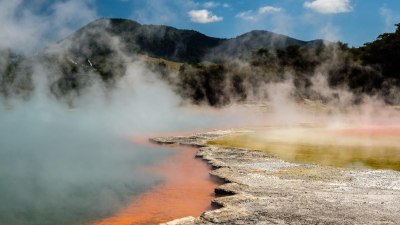How Walking on Sand Feels 10x Harder in Hot Weather
Explore the challenges and sensations of walking on sand during hot weather conditions.

Walking on sand is an enjoyable experience for many, often associated with beach holidays, vacations, and moments of relaxation by the ocean’s edge. However, when the sun is shining and temperatures soar, what was once a delightful activity can quickly turn into a challenging workout. The feeling of walking on hot sand offers unique sensations, and many factors contribute to why it feels significantly more challenging in higher temperatures.
One of the primary reasons walking on sand becomes tougher in hot weather is the temperature of the sand itself. When exposed to direct sunlight, sand can elevate to temperatures that are not just uncomfortable for the feet but can also cause fatigue. Sand absorbs heat, and when the surface reaches high temperatures, it can become unbearable to walk on, impacting both speed and endurance.
Walking on hot sand increases energy expenditure. As the body battles both the heat and the endeavor of moving through loose, shifting grains, it expends more energy than walking on solid ground. The effort needed to stabilize the body and push against the sand requires a greater effort from the muscles, resulting in quicker fatigue. This energy consumption is especially pronounced in higher temperatures, as the body is simultaneously trying to cool itself down while performing physical activity.
The Physical Sensation of Hot Sand
The sensation of hot sand beneath the feet can range from mildly uncomfortable to excruciating, depending on the individual’s pain threshold and the extreme of heat experienced. Walking barefoot on scorching sand can lead to burning sensations as the heat penetrates the soles of the feet. Many choose to wear flip-flops or water shoes to protect their feet from the heat, but this may lead to an entirely different set of challenges, such as awkward footing and less grip, causing further instability.
Those who venture to walk on sand during peak sun hours might also experience heat-related complications, like heat exhaustion, especially if they are not well-hydrated. When one's body begins to overheat, it can lead to symptoms such as dizziness, extreme fatigue, and confusion. Staying hydrated and taking frequent breaks while walking on sand becomes crucial to avoid exhaustion from heat.
Environmental Factors Influencing the Experience
Feeling hot while walking on sand isn’t solely about the sand's temperature; environmental factors play a significant role. Wind, humidity, and shade can all influence how the hot sand feels. On particularly breezy days, if cool gusts are present, the oppressive heat may feel more manageable, while still being hot and challenging walking conditions. Conversely, in still, humid conditions with no shade, the heat can become more intense and unbearable.
Additionally, the time of day plays a crucial role in how challenging walking on the sand feels. Early morning or late afternoon typically provides a more pleasant experience, as the sun isn’t at its peak, and temperatures are cooler. During these times, the sand also doesn’t heat up as much, making it less taxing physically to walk on. Planning walks in cooler parts of the day can help mitigate the challenges associated with walking on hot sand.
Footwear Choices and Challenges
The type of footwear can affect the experience of walking on hot sand. While some prefer going barefoot to feel the warmth of the sand in direct contact with their skin, this style can increase the risk of burns and blisters. Footwear like water shoes or sandals can provide some protection from heat but may also impede the walking efficiency. Not everyone considers that the soles of sandals can heat up in the sand, leading to burning sensations on the feet.
Additionally, the uneven surface of sand presents an added challenge. Engage your core and leg muscles more than walking on the pavement where stability is more abundant. Each step taken on shifting sand requires recalibration of balance, and the lack of solid ground can lead to compensatory muscle fatigue as different muscle groups are engaged during the activity. This fatigue can compound with the effects of heat, making walking longer distances feel significantly harder.
Strategies for Walking on Hot Sand
A good approach to overcoming the challenges of walking on hot sand in high temperatures includes strategic planning. Start early in the day or later in the afternoon when temperatures are lower. Hydration is critical before, during, and after the walk; a well-hydrated body regulates temperature more effectively. Applying sunscreen becomes important to protect the skin, as prolonged exposure to sunlight may lead to sunburns, which only adds to discomfort.
Using towels or mats to create pathways across the sand can help drastically; this way, individuals can skip the hottest sand spots. Bringing a cooler with ice packs for foot comfort and frequent breaks can also help recharge energies and fight fatigue. Moreover, choosing sandy areas that possess some level of shade can add relief as well. Trees, umbrellas, or even beach tents can assist in reducing the impact of direct sunlight.
The Psychological Aspect
Walking on sand in high temperatures can also have psychological implications. The discomfort from hot sand can lead to a quick negative psychological reaction. If the heat becomes unbearable, one's mental state can shift towards anxiety, reducing the overall enjoyment of the experience. Recognizing this is essential and reframing the activity to maintain a positive mindset can enhance the experience. Instead of focusing solely on the pain, emphasizing the beauty of the surroundings, the enjoyment of nature, and the happiness derived from the experience can shift how the body interprets the physical feeling.
While walking on sand can be an inherently enjoyable endeavor, especially associated with sunnygetaway locations and leisurely beach days, high temperatures pose unique challenges. The sensation of heat penetrates both physically and mentally, as warmth turns a seemingly simple task into a complex series of challenges involving endurance, energy, and perseverance. Proper planning, hydration, choosing the right times of day, and maintaining a positive mindset can make a significant difference in the quality of the experience. To fully appreciate the beauty of the beach and the sand, it’s essential to be prepared for the challenges laid by the sun, ensuring that each step taken is one that allows you to enjoy your environment fully.











